Quang Binh: A rendezvous in central VN (Part 1)
VGP – With a complex of over 300 caves and a 116km-long coastline with white sand, Quang Binh is becoming a potential tourist destination in the system entitled “central Heritage Road”.
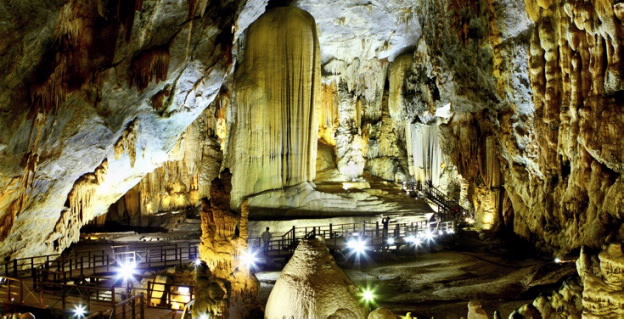 |
|
Moon palace like a silk curtain of fairy in Paradise cave |
Going northwest about 50km from Dong Hoi City, we reached Phong Nha – Ke Bang National Park. The signpost with the words “Phong nha – Ke Bang National Park, a world natural heritage” was like an invitation promising an exciting journey to explore this area.
Known as a “Kingdom of Caves,” Phong –Nha Ke Bang National Park is attracting local and international tourists to visit the caves such as Phong Nha, Tien Son, Thien Duong, Toi, En and Son Doong.
Luke Ford, a British tourist who returned to explore and survey the caves in Quang Binh for the third time said: “Compared to other caves I have visited, the caves in Quang Binh are a little bit more difficult to access but they are much more beautiful and primitive.”
We took an electric car to go through the forests which were hundreds of years old to Thien Duong Cave. In 2005, the British Caving Association conducted a research on this cave and announced it the longest cave in Asia.
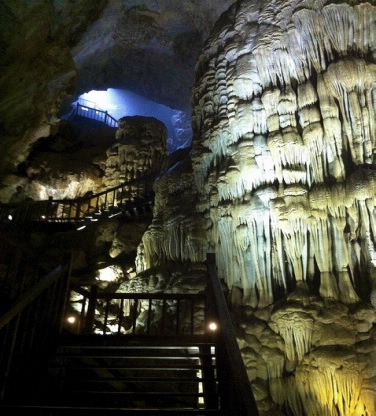 |
|
Road to lower world |
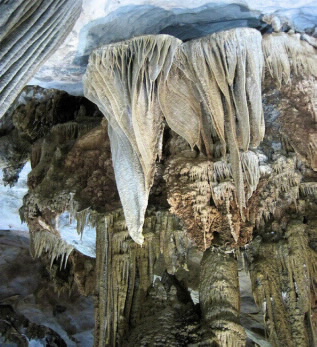 |
|
Stalactites in the shape of cake |
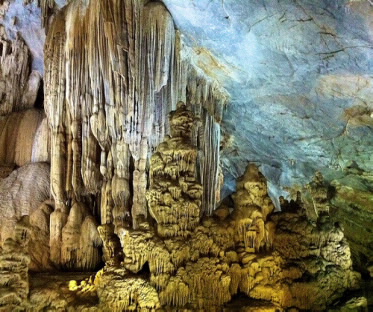 |
|
Gia Tri palace looks like three Gods of Blessings, Prosperity and Longevity (Fu Lu Shou) |
 |
|
Lotus tower |
 |
|
Paradise gate |
 |
|
Basilica palace with the highest ceiling of the Paradise cave |
Phan Van Dong, a tour guide said: “So far, visitors to this cave only go 1.5km deep. Few people know that from the last stop they can go 7km further. If we continue going forward, we’ll clearly see the primitiveness of this karst mountain, which is nearly 400 million years old, and its magnificence like a splendid underground palace.”
Curiosity induced us to go on with a 7km-long adventure with a flashlight on our heads and some specialized equipment. The deeper we went, the more we felt lost in an underground paradise with huge white stalactites which were as transparent as quartz. When tapped, the stalactites produced strange sounds fascinating us. Reaching the last point of our journey, our eyes were suddenly dazzled by the sunshine from a height of nearly 100 meters. On the ground there were stones and a stream rushing noisily through the forest.
 |
|
Visitors travel Son River to Phong Nha Cave |
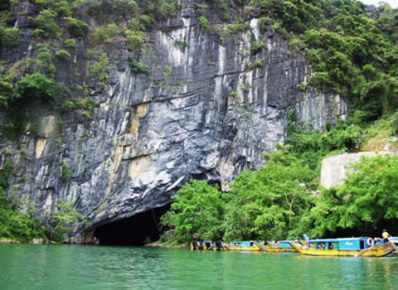 |
|
The gate of Phong Nha Cave |
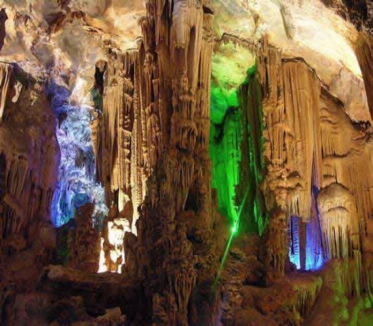 |
|
A corner of Phong Nha Cave |
In the front of the cave, the stunning scenery of mountains and rivers is even more attractive. The imposing nature with particularly interesting images appears to arouse people’s imagination. The gate of the cave is about 20 meters wide and 10 meters high and has rough stalactites. The cave is like an upturned bowl above the water.
We continued going southwest and reached Sing Ton Valley, 15 km from Phong Nha Cave. It took us much time walking 5km though the forests and climbing dangerously high cliffs to explore a primeval forest covering 2,000ha. We were really surprised at the fact that in the Truong Son Range in Quang Binh there is a “living museum” with historical, geological and geomorphologic values and high biodiversity in flora and fauna which have been well preserved.
After passing through many rocky slopes and the primeval forest we rowed the kayaks down the transparent Chay River and arrived at the entrance to Toi (Dark) Cave whose values were being surveyed by the explorers.
According to Dr. Howard Libert, an expert of the British Caving Association, over more than 400 years of tectonics, the rangers of mountains with typical karst geomorphologic characteristics in Phong Nha are a part of the area of the most ancient karst mountains in Asia which have continually developed and revealed new hidden treasures.
Le Thanh Loi, Director of Phong Nha – Ke Bang Tourist, Cultural and Ecological Centre told us that in the past ten years, three million people visited Phong Nha – Ke Bang National Park. To popularize the beauty of the caves in this area, the management board of the park promoted communication activities though the exhibitions in Germany and Laos and coordinated with television film studios in Brazil and Hong Kong to make films.
The management board also signed with some travel companies to organize ecological and adventure tours to attract more tourists to the park in the near future./.

